Navigating Employee Transitions with Ease
Employee departures, role changes, and temporary absences require careful planning to minimize disruption. This listicle presents eight work transition plan templates to streamline handovers and preserve knowledge, ensuring business continuity. These tools solve the common problems of lost productivity and scattered information during transitions. Learn how these work transition plan templates from Microsoft Word, Smartsheet, Template.net, ClickUp, Monday.com, Asana, Notion, and Excel can help your team navigate employee transitions effectively.
1. Microsoft Word Work Transition Plan Template
A smooth transition is crucial for any organization undergoing personnel changes. Whether it’s an employee leaving, a new hire onboarding, or an internal role shift, a well-structured work transition plan template is essential. A poorly managed transition can lead to knowledge gaps, project delays, and decreased team productivity. This is where a robust work transition plan template comes into play, and the Microsoft Word version offers a readily accessible and customizable solution. This template provides a framework for documenting crucial information, outlining responsibilities, and ensuring a seamless handover of tasks and knowledge. It empowers organizations to minimize disruption and maintain business continuity during periods of change. Using a standardized template also ensures consistency in the transition process, regardless of the specific individuals or roles involved. This allows for better tracking, reporting, and overall management of transitions across the organization.
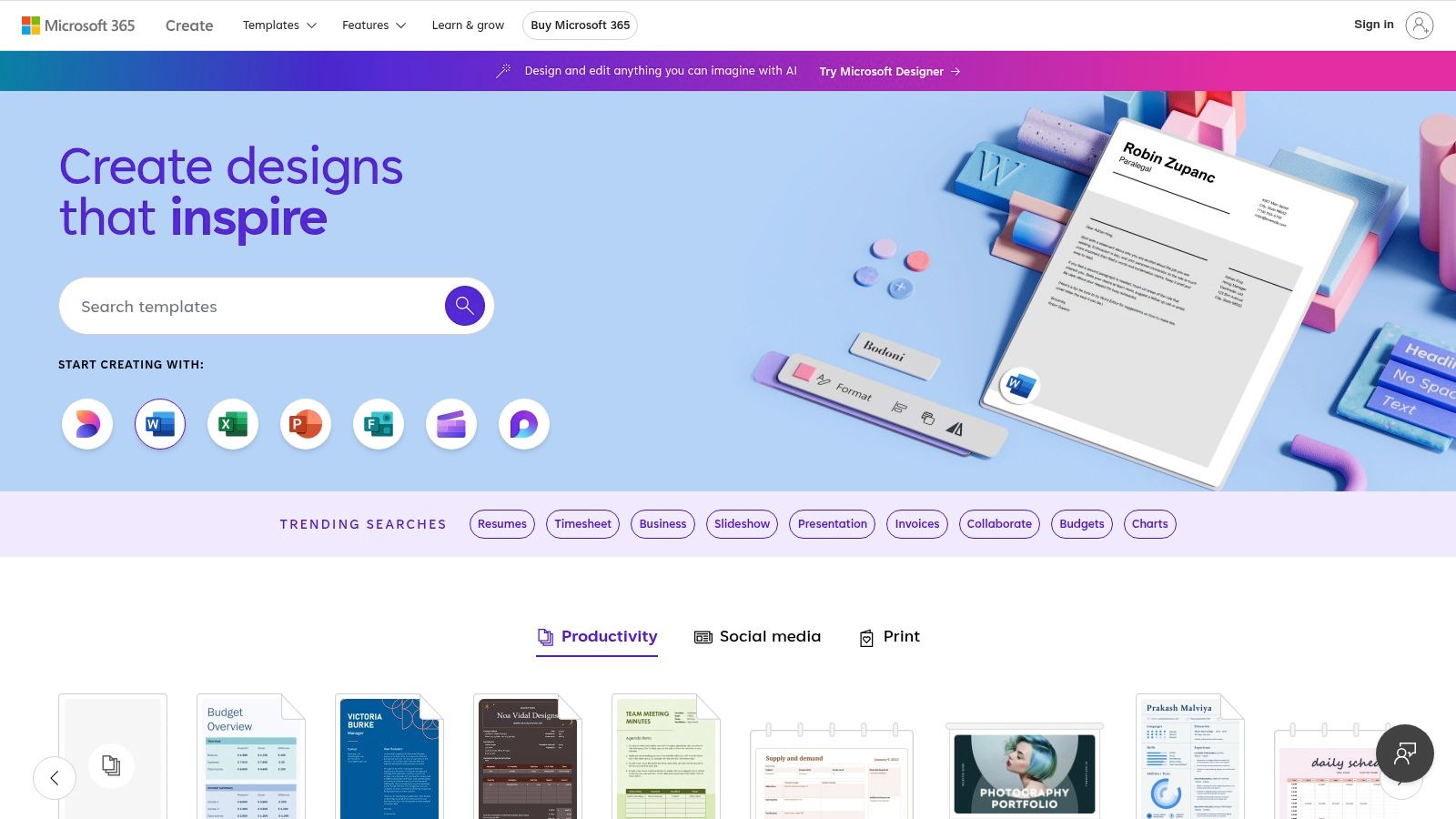
The Microsoft Word work transition plan template is a comprehensive tool designed specifically for employee transitions. It features structured sections dedicated to knowledge transfer, task handover, and timeline management. These pre-formatted sections for tasks, deadlines, and responsibilities make it easy to organize and visualize the entire transition process. The customizable timeline and milestone tracking feature allows for clear visualization of progress and helps keep everyone involved accountable. Furthermore, dedicated sections for knowledge transfer documentation ensure that critical information is captured and readily available for the incoming individual or team. The template also includes fields for contact information and stakeholder mapping, facilitating communication and collaboration among all parties involved. Progress tracking and status update fields enable real-time monitoring of the transition’s progress, making it easier to identify potential roadblocks and adjust the plan as needed.
This template’s strength lies in its accessibility and adaptability. For organizations already utilizing Microsoft Office, the compatibility is seamless. It requires only a standard Microsoft Word license, making it accessible to most users. This eliminates the need for specialized software or extensive training. Its ease of customization allows tailoring to specific needs, whether it’s for an individual contributor or a complex project handover. Users can modify sections, add specific details, and adjust the layout to align with their organization’s requirements. The professional formatting and layout create a presentable and easy-to-understand document that can be shared with stakeholders, including HR, management, and team members. The collaborative nature of Word documents also simplifies the process of sharing and working on the plan with multiple individuals, promoting transparency and shared ownership of the transition process.
While the Microsoft Word template offers many advantages, some limitations should be considered. Compared to more sophisticated project management tools, the automation features are limited. This means that progress tracking might require manual updates, which can be time-consuming. While the template offers basic timeline visualization, it doesn’t provide the advanced dependency tracking or automated notifications found in dedicated project management software. For larger organizations with complex transitions, these limitations might necessitate supplemental tools or processes.
Compared to alternatives like dedicated project management software (e.g., Asana, Trello) or specialized HR platforms, the Microsoft Word template offers a simpler, more accessible solution for less complex transitions. While these alternatives offer more advanced features like automated workflows and detailed reporting, they can be overkill for smaller teams or straightforward transitions. The Word template provides a balanced approach, offering sufficient structure and guidance without the overhead of complex software.
For implementing this template, start by downloading it from the Microsoft Templates website (https://templates.office.com). Populate the pre-defined sections with relevant details, including key tasks, deadlines, responsibilities, and contact information. Customize the timeline and milestones to reflect the specific transition requirements. Share the document with all stakeholders and encourage collaborative input and updates. Regularly review the progress and adjust the plan as needed.
For Jira Cloud Administrators, Project Managers, and Team Leads, this template can be a valuable tool for documenting project handovers and ensuring continuity during team transitions. IT Service Management agents can use it to document knowledge transfer processes for critical systems and services. Agile software development teams can adapt it to manage the transition of tasks and responsibilities during sprints or project phases. HR and Operations professionals can leverage the template to streamline employee onboarding and offboarding processes. The Microsoft Word work transition plan template offers a practical and readily available solution for managing transitions effectively, ensuring business continuity, and minimizing disruptions.
2. Smartsheet Transition Plan Template
When navigating the complexities of a work transition, whether it’s onboarding a new employee, offboarding a departing one, transferring responsibilities within a team, or managing a larger organizational restructure, having a robust work transition plan template is crucial. The Smartsheet Transition Plan Template offers a dynamic, cloud-based solution designed to streamline and optimize this process. It combines the familiar functionality of a spreadsheet with powerful project management features, making it a versatile tool for a wide range of transition scenarios. This template empowers teams to manage change effectively, ensuring minimal disruption and maximizing productivity.
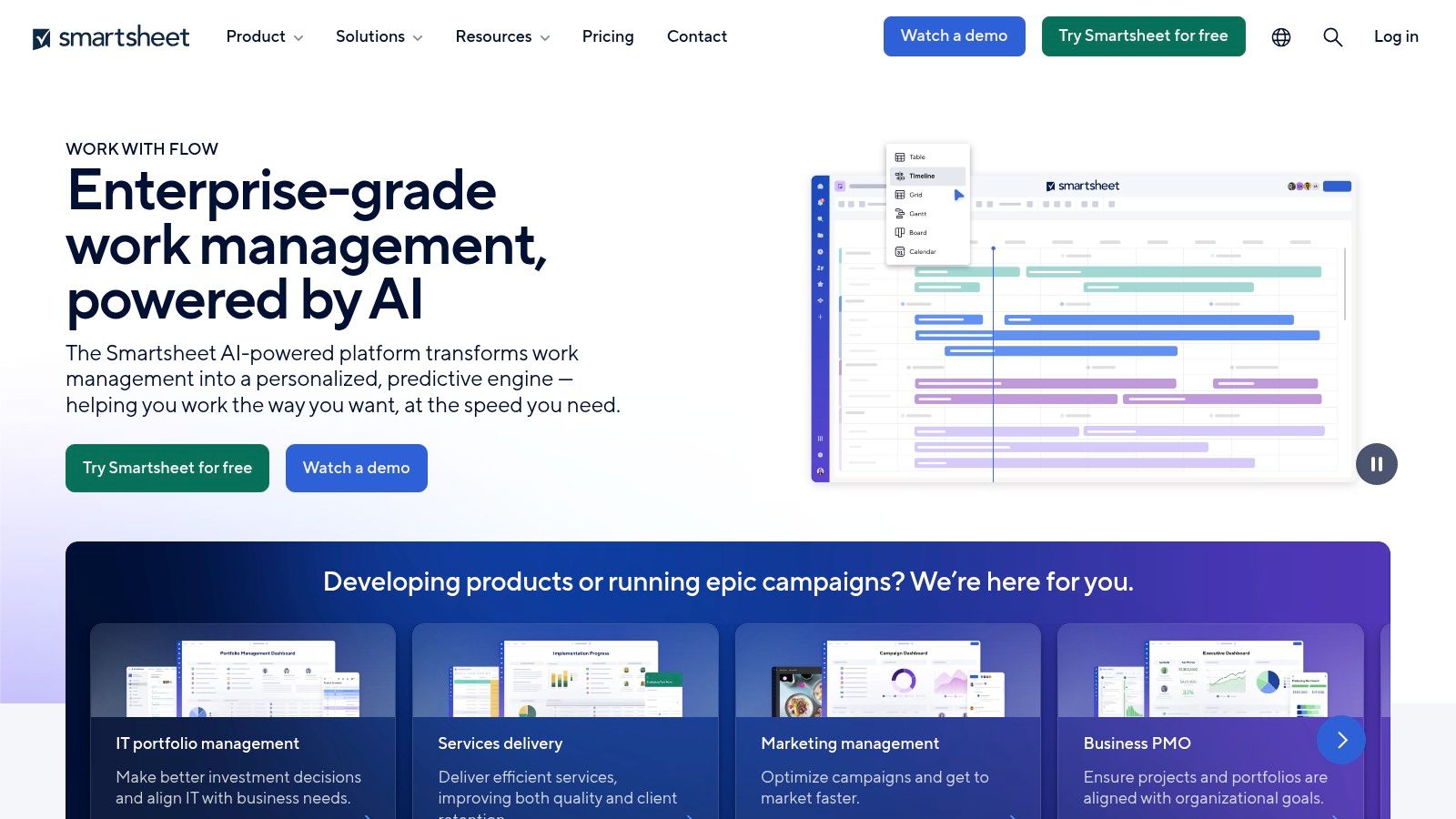
Smartsheet stands out for its real-time collaboration capabilities, enabling seamless information sharing and updates among team members. This is particularly beneficial in transition scenarios, where transparent communication is paramount. Imagine onboarding a new team member: With Smartsheet, the onboarding checklist, training schedule, and assigned tasks can be easily accessed and tracked by all involved parties, including the new hire, their manager, and HR. This ensures everyone stays informed and aligned throughout the process. For offboarding, Smartsheet facilitates knowledge transfer by providing a central repository for documentation and tasks, ensuring critical information isn’t lost when an employee departs.
Beyond collaboration, Smartsheet offers an automated workflow and notification system that keeps the transition process on track. Automated reminders for deadlines, task assignments, and approvals ensure nothing slips through the cracks. This automation frees up valuable time for managers and team members to focus on other critical aspects of the transition. For instance, during a departmental restructure, automated notifications can keep everyone informed about changes in reporting structures, responsibilities, and timelines, minimizing confusion and anxiety.
Visualizing the transition timeline is crucial for effective planning and execution. Smartsheet’s Gantt chart feature provides a clear overview of the entire process, highlighting key milestones, dependencies, and deadlines. This allows managers to easily monitor progress, identify potential bottlenecks, and proactively address any delays. Project managers, especially, will appreciate the ability to manage the transition as a formal project within Smartsheet, leveraging its robust project management capabilities.
Integration with popular business applications further enhances Smartsheet’s functionality. Connectivity with tools like Microsoft Teams, Slack, and Google Workspace streamlines communication and data sharing, consolidating information within a central hub. This is particularly useful for IT Service Management agents who may need to coordinate system access changes and software installations during an employee transition. Agile software development teams can leverage Smartsheet to manage sprint transitions, track progress on key deliverables, and ensure a smooth handover between sprints.
While Smartsheet offers a powerful suite of features, it’s important to consider the potential drawbacks. The full range of features, including advanced automation and reporting capabilities, requires a paid subscription. While a free version exists, it has limited functionality. New users may also experience a learning curve when first navigating the platform. Its comprehensive feature set, while a strength, can also make it feel overly complex for managing simple transitions. For less complex scenarios, a simpler tool might suffice. You can learn more about Smartsheet Transition Plan Template and similar project handover strategies through additional resources.
For Jira Cloud Administrators, Smartsheet can be a valuable complement for managing the people-side of transitions related to project team changes, especially when coordinating with teams outside of Jira. HR and operations professionals will find the template highly beneficial for managing employee onboarding, offboarding, and internal transfers. Team leads can use Smartsheet to facilitate smooth knowledge transfer and task handovers within their teams.
Despite the learning curve and subscription costs, Smartsheet’s powerful features justify its place in this list. Its cloud-based accessibility, robust automation, and excellent collaboration tools provide a comprehensive platform for managing a variety of work transitions, from simple to complex. Implementing Smartsheet successfully involves clearly defining the scope of the transition, identifying key stakeholders, and customizing the template to match the specific needs of the transition process. By leveraging its features effectively, organizations can ensure smooth, efficient, and well-managed transitions, minimizing disruption and maximizing productivity.
3. Template.net Work Transition Plan Template
Navigating a work transition, whether it’s a departmental restructure, a new software implementation, or an employee departure, requires careful planning and execution. A well-structured work transition plan template can be an invaluable tool for minimizing disruption, maintaining productivity, and ensuring a smooth changeover. Template.net offers a robust collection of such templates, providing a valuable resource for various professionals, including Jira Cloud Administrators, Project Managers, Team Leads, IT Service Management Agents, Agile Software Development Teams, and HR and Operations Professionals. These pre-built templates offer a significant head start, eliminating the need to create a plan from scratch and allowing you to focus on the specifics of your transition. This makes Template.net a strong contender for anyone looking to streamline their transition processes.
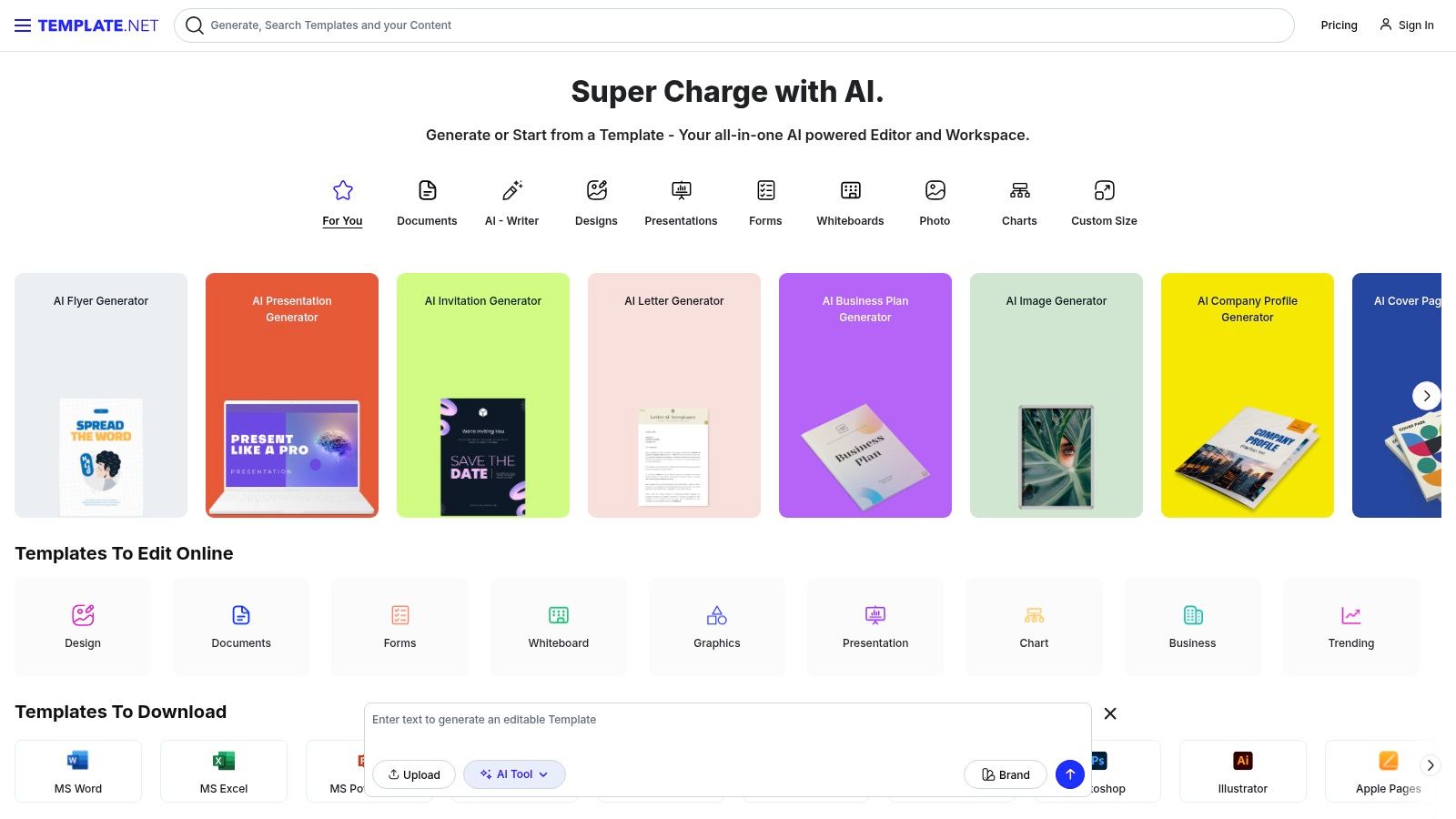
Template.net’s strength lies in its comprehensive library of work transition plan templates, covering a wide array of industry-specific scenarios and transition types. From employee onboarding and offboarding to project handovers and system migrations, you’re likely to find a template that aligns with your specific needs. This eliminates the tedious task of building a plan from the ground up. They offer templates in multiple formats, including Word, Excel, PDF, and Google Docs, ensuring compatibility with various software platforms and facilitating collaboration among team members. This flexibility is especially useful for distributed teams or organizations that utilize different software ecosystems.
The platform boasts a user-friendly drag-and-drop customization interface, allowing you to tailor the chosen template to reflect the unique aspects of your transition. This allows for the inclusion of specific tasks, timelines, responsibilities, and communication strategies relevant to your situation. Pre-designed, professional layouts and formatting ensure that your final work transition plan presents a polished and professional image. This is crucial for communicating effectively with stakeholders and ensuring that the plan is taken seriously.
Template.net offers both free and premium templates. While the free options provide a good starting point, the premium templates offer more advanced features and designs. The pricing for premium subscriptions varies based on the chosen plan, offering different levels of access to the template library and features. While specific pricing information isn’t readily available on the general pages and requires further exploration within the platform, the availability of both free and paid options caters to different budget constraints.
Implementation and Setup Tips:
- Identify Your Specific Needs: Before diving into the template library, clearly define the scope and objectives of your transition. This will help you select the most appropriate template.
- Customize Thoroughly: Don’t just fill in the blanks. Adapt the chosen work transition plan template to reflect the specifics of your situation, including key stakeholders, timelines, and communication channels.
- Collaborate and Review: Share the draft plan with relevant stakeholders for feedback and ensure everyone is on the same page.
- Regularly Update: A work transition plan is a living document. Regularly review and update it to reflect progress and address any unforeseen challenges.
Comparison with Similar Tools: While other platforms offer project management templates, Template.net differentiates itself with its focus on specific transition scenarios and the sheer variety of its offerings. This makes it a more targeted resource for managing transitions compared to more general-purpose project management tools.
Technical Requirements: Template.net is a web-based platform, so the primary requirement is a stable internet connection and a compatible web browser. For offline editing, you’ll need the relevant software (Microsoft Word, Excel, or Google Docs) depending on the chosen file format.
Pros:
- Wide variety of template designs and formats
- Compatible with multiple software platforms
- Professional and polished appearance
- Quick setup and implementation
Cons:
- Premium templates require a paid subscription
- Limited advanced project management features
- Some templates may require significant customization
Website: https://www.template.net
In conclusion, Template.net offers a valuable resource for anyone navigating a work transition. Its diverse collection of work transition plan templates, combined with user-friendly customization features, makes it a powerful tool for minimizing disruption and ensuring a smooth changeover. While the premium features come at a cost, the availability of free options and the platform’s specialized focus on transitions make it a worthwhile consideration for various professional roles.
4. ClickUp Transition Plan Template
Managing work transitions, whether it’s onboarding a new employee, offboarding a departing one, or shifting project responsibilities, demands a structured approach. Without a clear plan, these transitions can become chaotic, leading to decreased productivity, knowledge gaps, and project delays. A robust work transition plan template becomes crucial for ensuring a smooth and efficient process. ClickUp offers a powerful solution with its integrated project management template, designed specifically to streamline employee transitions and maintain workflow continuity. This template provides a comprehensive framework for orchestrating various transition types, making it a valuable tool for Jira Cloud Administrators, Project Managers, Team Leads, IT Service Management Agents, Agile Software Development Teams, and HR and Operations Professionals alike.
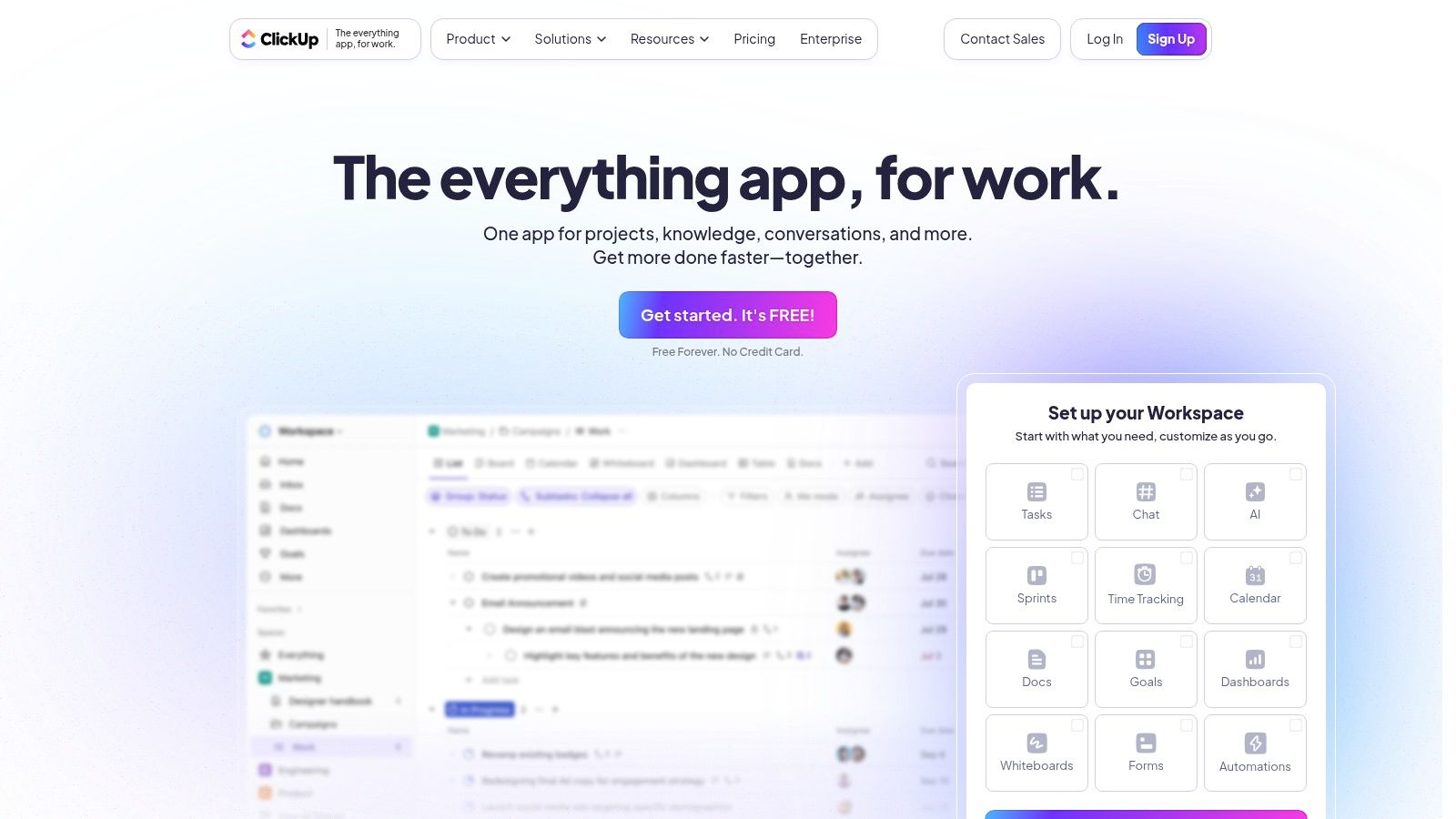
ClickUp’s work transition plan template distinguishes itself through its integrated approach. Unlike standalone templates or spreadsheets, it leverages ClickUp’s project management capabilities, offering task management, time tracking, team communication, and various visualization options within a single platform. This all-in-one nature eliminates the need to juggle multiple tools, centralizing all transition-related activities and fostering seamless collaboration. It deserves a place on this list because it combines the structure of a dedicated template with the power and flexibility of a full-fledged project management system.
The template’s features are designed to address the specific needs of managing transitions. The integrated task management and assignment system allows you to break down the transition process into individual tasks, assign responsibilities, and track progress. Time tracking and deadline management features enable efficient time allocation and ensure timely completion of transition activities. Custom fields provide the flexibility to tailor the template to specific transition requirements, capturing unique information relevant to each situation, like knowledge transfer checklists or account access details. Multiple view options, including List, Board, Calendar, and Gantt chart views, offer different perspectives on the transition plan, catering to various working styles and preferences. The built-in communication and comment system facilitates seamless collaboration between team members involved in the transition, ensuring everyone stays informed and aligned.
For Jira Cloud Administrators migrating tasks and projects to a new system, the ClickUp template can be particularly beneficial. It allows for a structured approach to migrating data and user accounts, tracking progress, and ensuring a smooth transition for all users. Project Managers can use the template to manage project handovers, ensuring a clear transfer of responsibilities and minimizing disruption to ongoing projects. HR professionals can leverage it for onboarding and offboarding processes, standardizing procedures and ensuring compliance.
While ClickUp offers a free tier with basic features, more advanced features, such as increased storage and custom automations, require a paid subscription. Pricing varies depending on the plan chosen, with options for individuals, teams, and businesses. The technical requirement is primarily internet access and a compatible web browser. While ClickUp is intuitive to use, leveraging the full potential of the platform might require some initial training for team members unfamiliar with the system.
Compared to using generic project management tools or spreadsheet-based templates, ClickUp provides a more structured and dedicated solution for work transitions. While tools like Asana or Trello offer task management capabilities, they may lack the specialized features and customizability of ClickUp’s dedicated template.
Implementation and Setup Tips:
- Start with a clear understanding of your transition needs: Define the scope of the transition, identify key stakeholders, and outline the desired outcomes.
- Customize the template: Utilize the custom fields to tailor the template to your specific transition requirements. Add fields for specific documentation, training materials, or contact information.
- Establish clear roles and responsibilities: Assign tasks and deadlines to individuals involved in the transition process.
- Utilize the communication features: Encourage team members to use the built-in communication tools to keep everyone informed and aligned.
- Regularly review and update the plan: Monitor progress, identify any roadblocks, and adjust the plan as needed.
ClickUp’s work transition plan template (available at https://clickup.com) offers a comprehensive solution for managing various types of workplace transitions. While it can be overwhelming for very simple transitions and requires team adoption of the platform, its powerful features, customizability, and integration with ClickUp’s wider project management ecosystem make it a valuable tool for organizations seeking to streamline their transition processes and maintain business continuity.
5. Monday.com Transition Template
When it comes to orchestrating smooth work transitions, a robust work transition plan template is essential. Monday.com offers a compelling solution with its visual work operating system and dedicated transition template. This platform goes beyond basic task management, providing a centralized hub for all transition-related activities, ensuring a seamless handover of responsibilities and knowledge. This is particularly crucial for roles like Jira Cloud Administrators, Project Managers, Team Leads, IT Service Management Agents, Agile Software Development Teams, and HR and Operations Professionals, all of whom frequently encounter scenarios requiring structured transitions.
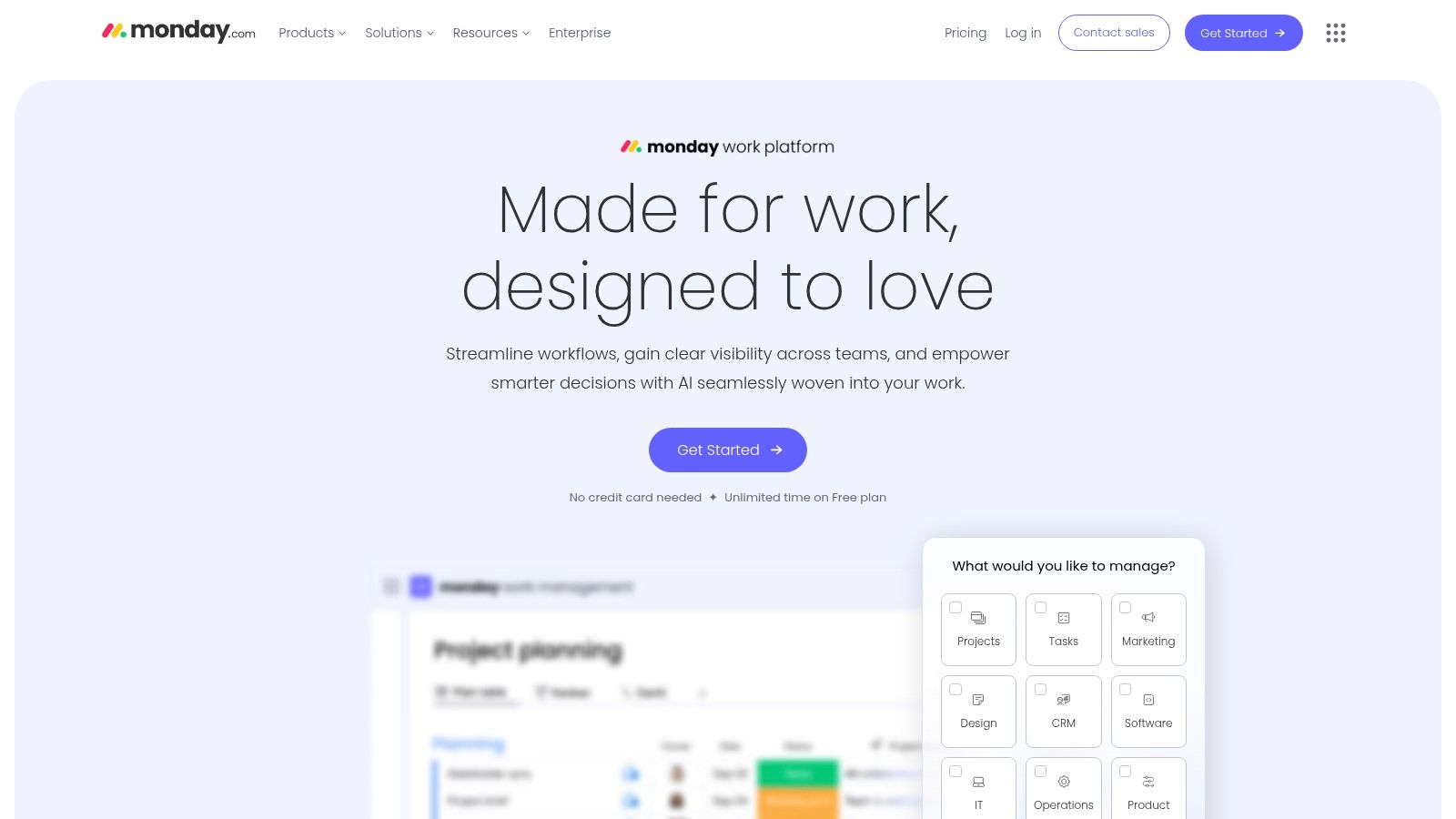
Monday.com’s visual board interface, with its color-coded status updates, provides an at-a-glance overview of the entire transition process. This transparency is invaluable for both the departing and incoming employees, as well as for the supervising team. Imagine an IT Service Management Agent transitioning responsibilities for a critical system. Using Monday.com, they can meticulously document each step, assign tasks, and track progress in real-time, ensuring no crucial detail is overlooked.
Automated workflow triggers and notifications further streamline the process. For example, when a departing Jira Cloud Administrator completes a knowledge transfer session, the system can automatically notify the incoming administrator and trigger the next phase of the onboarding process. This level of automation minimizes manual intervention and ensures a consistent, efficient transition experience. The platform also excels in file and document management. All relevant documents, training materials, and handover notes can be centralized within the platform, eliminating the need for scattered emails and shared drives. This is especially beneficial for Agile Software Development Teams where documentation and knowledge sharing are paramount.
The timeline and dependency tracking feature offers another layer of control. Project Managers and Team Leads can visually map out the transition timeline, define dependencies between tasks, and identify potential bottlenecks. This foresight allows for proactive adjustments and mitigates risks associated with delays. Moreover, Monday.com integrates seamlessly with popular business tools, further amplifying its functionality. Integration with communication platforms like Slack, email clients, and other project management software ensures that all relevant stakeholders stay informed and connected throughout the transition.
For a deeper dive into the principles of change management and how they relate to work transitions, you might find this article helpful: Learn more about Monday.com Transition Template. It provides valuable context and practical advice for implementing successful transition strategies.
While Monday.com offers a powerful solution for managing work transitions, it’s crucial to consider its limitations. The platform can be expensive for larger teams, potentially making it less accessible for organizations with tight budgets. Additionally, although the interface is generally intuitive, some users may require training to fully utilize the platform’s advanced features. Finally, customization options can be limited in lower-tier plans, which might restrict flexibility for teams with highly specific requirements. HR and Operations Professionals, in particular, may need to carefully evaluate the different pricing tiers to ensure alignment with their organization’s budget and needs.
Despite these limitations, Monday.com earns its place in this list due to its highly visual interface, robust automation capabilities, and excellent team transparency. Its strength lies in its ability to centralize all transition-related activities, streamline workflows, and ensure a smooth, efficient handover of responsibilities. For teams seeking a comprehensive and visually engaging work transition plan template, Monday.com offers a valuable solution, particularly for those willing to invest in its more comprehensive plans. For pricing information and a more detailed breakdown of features, visit the Monday.com website. This will help you assess whether this powerful work transition plan template is the right fit for your organization’s specific needs.
6. Asana Transition Project Template
Streamlining employee departures and onboarding new hires can be a complex process, often involving multiple stakeholders, numerous tasks, and the critical transfer of knowledge. A well-structured work transition plan template is essential for minimizing disruption and ensuring business continuity. Asana, a popular project management platform, offers a robust solution with its Transition Project Template, providing a centralized hub for managing all aspects of the transition process. This template empowers teams to navigate departures and arrivals efficiently, preserving valuable institutional knowledge and minimizing productivity loss.
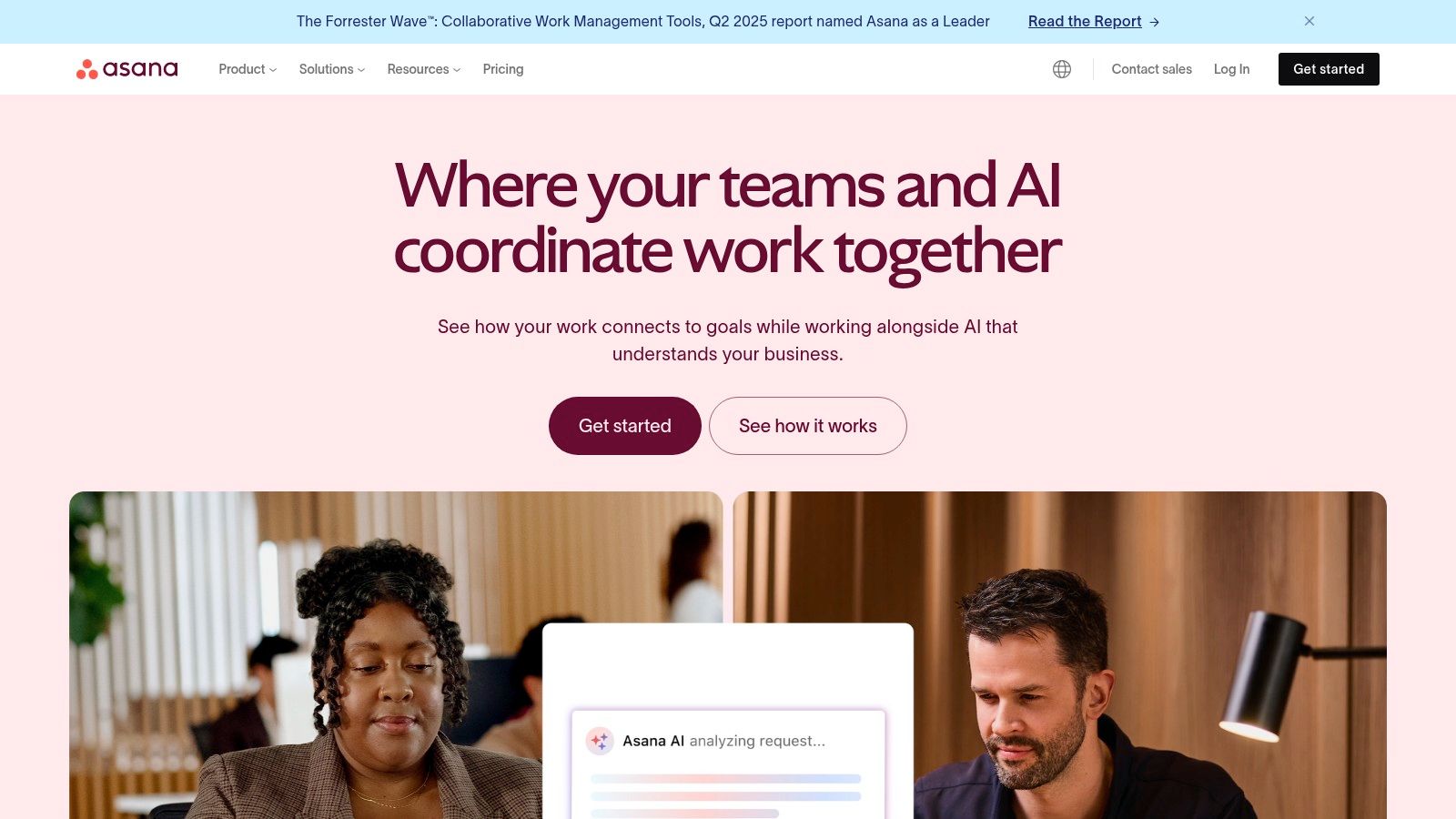
The Asana Transition Project Template shines through its pre-built structure, providing a solid foundation for various transition scenarios. Whether it’s an employee leaving, a role being redefined, or a team restructuring, the template offers pre-built task templates for common transition activities, minimizing the need to start from scratch. These tasks cover everything from knowledge transfer and documentation to asset handover and communication updates, ensuring a comprehensive approach to the transition. This pre-built structure is a significant advantage, especially for teams facing tight deadlines or frequent transitions. It allows project managers and team leads to quickly adapt the template to their specific needs and get started right away.
The template’s strength lies in its visualization and collaboration features. Timeline and calendar views provide a clear overview of deadlines and dependencies, facilitating effective deadline management. This visual representation is particularly beneficial for complex transitions involving multiple handovers and parallel tasks. The integrated team collaboration and communication tools within Asana further streamline the process. Team members can communicate directly within the platform, share updates, and collaborate on tasks, fostering transparency and reducing the risk of miscommunication. Custom fields allow you to add transition-specific data, such as the employee’s departure date, replacement details, or key handover items. This level of customization allows teams to tailor the template to their specific needs and track relevant information within a single platform. Progress reporting and dashboard views provide stakeholders with real-time insights into the transition’s progress, ensuring everyone is aligned and aware of potential roadblocks.
For Jira Cloud Administrators, Project Managers and Team Leads, IT Service Management Agents, Agile Software Development Teams, and HR and Operations Professionals, Asana’s intuitive interface and setup are invaluable. Even without extensive project management experience, users can quickly navigate the platform and manage transitions effectively. The availability of a free tier for small teams makes it accessible to organizations of all sizes. Good mobile app functionality ensures seamless access and updates on the go, further enhancing flexibility and responsiveness. You might want to learn more about Asana Transition Project Template to understand its broader applications in capacity planning and team management.
While the free version offers a solid foundation, it’s important to note that advanced features, such as custom reporting and advanced integrations, require a paid subscription. The free version’s limited customization options might not cater to highly specialized or industry-specific transition requirements. For instance, a legal firm handling sensitive client data might require more granular control over access and permissions than the free version provides. Comparing Asana with similar project management tools like Trello or Monday.com can help you determine the best fit for your organization’s specific needs and budget. Consider factors like team size, project complexity, and required features when making your decision.
Implementing the Asana Transition Project Template is straightforward. Start by creating a new project using the template. Then, customize the pre-built tasks to reflect your specific transition scenario. Assign tasks to relevant team members and set deadlines based on the transition timeline. Utilize the communication features to keep everyone informed and address any questions or concerns. Regularly review the progress dashboards to ensure the transition stays on track. By leveraging the template’s structure and features, teams can create a well-defined plan, facilitate seamless handovers, and minimize disruption during employee transitions. This ensures a smoother, more efficient process for everyone involved, ultimately contributing to business continuity and a positive employee experience.
7. Notion Work Transition Template
When navigating a work transition, whether it’s onboarding a new team member, shifting project ownership, or managing an organizational restructure, having a robust plan is crucial. A dedicated work transition plan template can streamline the process, ensuring clarity and minimizing disruption. Notion, a powerful and versatile workspace platform, offers a compelling solution with its customizable work transition template. This all-in-one workspace allows you to combine documentation, task management, and knowledge base features, providing a centralized hub for all transition-related information. It’s a valuable tool for Jira Cloud Administrators, Project Managers and Team Leads, IT Service Management Agents, Agile Software Development Teams, HR and Operations Professionals, and anyone else involved in managing transitions.
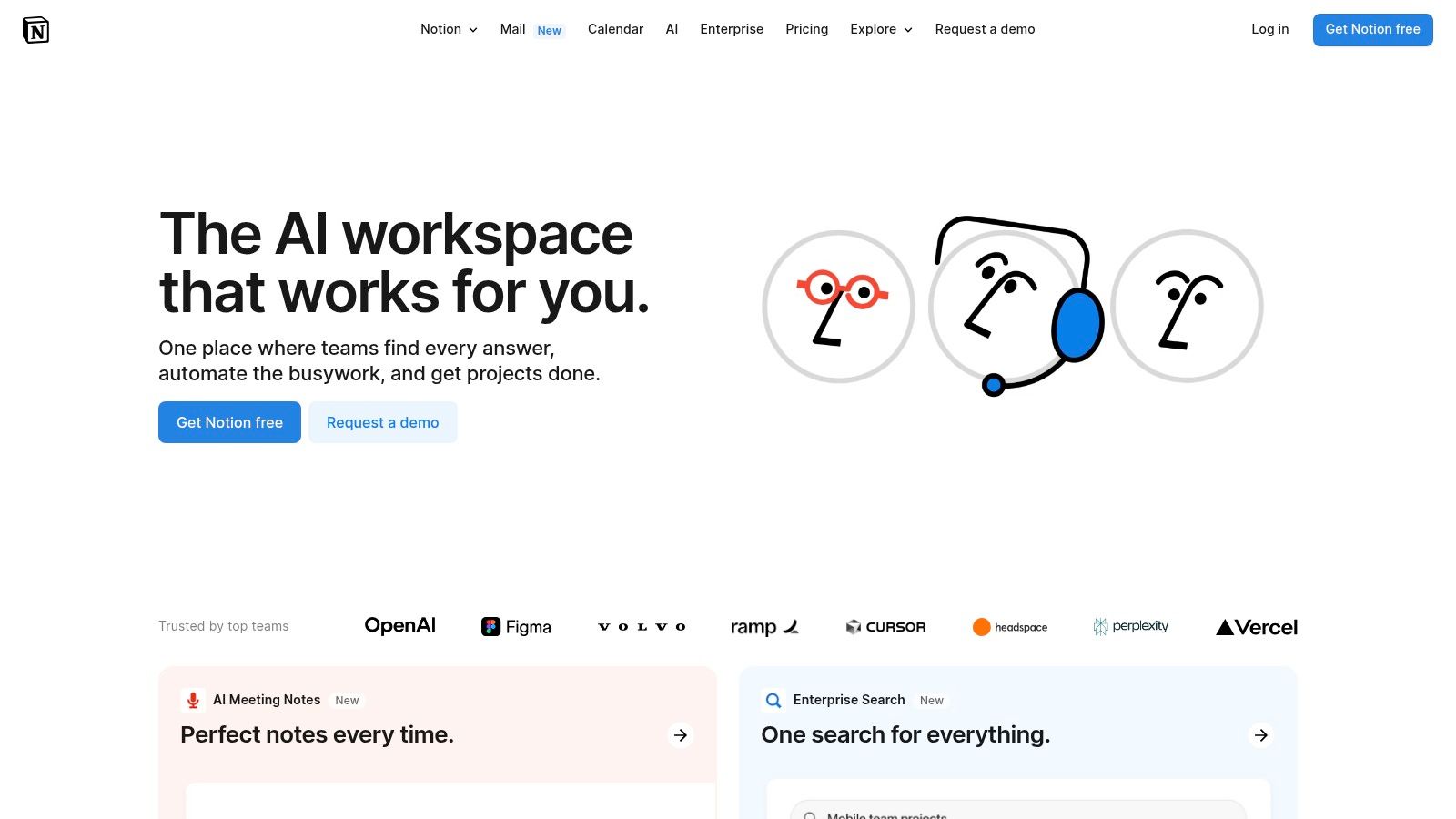
The Notion Work Transition Template stands out due to its flexibility and customizability. Unlike rigid, pre-defined templates, Notion allows you to tailor the structure to perfectly match the specific needs of your transition. This adaptability makes it suitable for a wide range of scenarios, from individual role transitions to large-scale departmental restructuring. Furthermore, its database functionality allows you to create linked databases for tracking tasks, managing resources, and monitoring progress. This interconnectedness fosters a more organized and efficient transition process.
One of the core strengths of Notion is its ability to combine multiple tool functionalities into a single platform. You can create detailed documentation outlining the transition plan, assign tasks with deadlines and assignees, and build a knowledge base to store essential information. This consolidated approach reduces the need to switch between multiple applications, saving time and improving team communication. Real-time collaborative editing ensures everyone stays on the same page, promoting transparency and accountability throughout the process. You can even embed rich media, like images and videos, directly into the template, enhancing clarity and engagement. Considering how critical clear internal communications are during any transition, you might find this article on internal communications plan template helpful for developing a comprehensive strategy.
Notion’s free personal plan offers ample features for individual use and small teams. For larger teams and organizations requiring advanced functionalities like unlimited guests and version history, paid plans are available, offering greater collaboration and control. While there are no specific technical requirements beyond a device with internet access, effectively utilizing Notion’s full potential for complex work transitions may require a learning curve. Users need to invest time in understanding the platform’s database functionality and template customization options. Without proper structuring, Notion workspaces can become disorganized, hindering productivity. While it provides robust task management capabilities, its project management features are less comprehensive than dedicated project management software like Jira or Asana.
For example, a Jira Cloud Administrator transitioning responsibilities to a new team member could use the Notion Work Transition Template to document the handover process meticulously. They could create a database to list all Jira projects, assign ownership, and track the progress of knowledge transfer. Checklists for key tasks, training materials, and contact information can all be stored within the same workspace. Similarly, HR professionals can use the template for onboarding new employees, providing a centralized resource for onboarding documentation, training schedules, and company policies.
To effectively implement the Notion Work Transition Template, start by defining the scope of the transition and identifying key stakeholders. Then, customize the template to reflect the specific needs of the transition, creating relevant databases and pages. Clearly define roles and responsibilities within the workspace, assigning ownership for different sections and tasks. Leverage Notion’s collaborative features to encourage active participation and knowledge sharing among team members. Finally, regularly review and update the template as the transition progresses to ensure it remains relevant and effective.
Despite the potential learning curve and the need for structured organization, the Notion Work Transition Template provides a powerful and versatile solution for managing various work transitions. Its flexibility, combined with its integrated functionalities and collaborative features, makes it a valuable tool for teams and individuals seeking a comprehensive and adaptable platform for navigating change. By investing time in understanding and customizing the template, users can significantly improve the efficiency and clarity of their work transition plans.
8. Excel Work Transition Plan Template
When it comes to managing work transitions, having a robust and adaptable plan is crucial. An Excel work transition plan template offers a powerful and familiar solution for individuals and teams navigating changes, whether it’s a departmental restructure, a new project handover, employee onboarding, or even covering for vacation time. This versatile tool provides a structured framework for outlining tasks, assigning responsibilities, tracking progress, and ensuring a smooth and efficient transition. Its widespread availability and inherent flexibility make it a practical choice for a wide range of scenarios. For many organizations already utilizing Excel, a dedicated work transition plan template can be easily integrated into existing workflows.
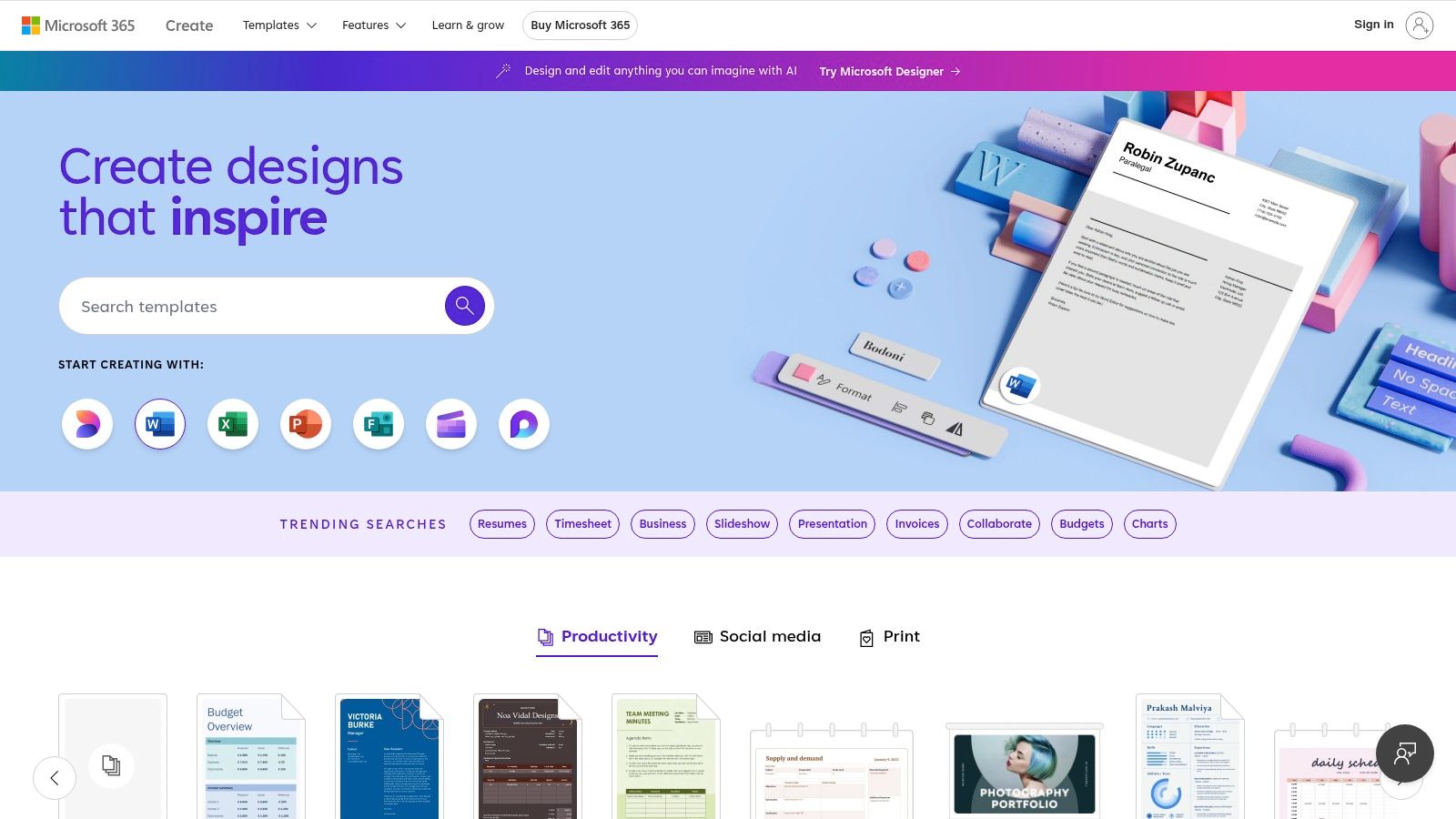
This particular Excel work transition plan template stands out due to its comprehensive features. It goes beyond a simple task list by offering multiple interconnected worksheets dedicated to various aspects of the transition process. These worksheets typically include task management with assigned owners and deadlines, a detailed timeline for visualizing key milestones, contact information for all stakeholders involved, and progress reporting with built-in formulas and conditional formatting to highlight critical updates. This multi-faceted approach allows for meticulous planning and execution, ensuring no crucial detail is overlooked.
One of the key strengths of using an Excel work transition plan template is its powerful calculation and analysis capabilities. Built-in formulas automatically update calculations, saving time and reducing the risk of errors. Conditional formatting provides visual cues for tracking progress and identifying potential roadblocks. Furthermore, pivot tables empower users to analyze data from different perspectives and generate insightful reports for stakeholders. Customizable charts and graphs allow for clear visualization of progress and performance metrics, facilitating effective communication and decision-making.
For project managers and team leads, this template becomes a centralized hub for orchestrating project handovers and onboarding new team members. Jira Cloud Administrators can leverage it to document and manage system migrations or changes in configurations. IT Service Management Agents can utilize it for incident management transitions and knowledge transfer. Agile Software Development teams benefit from its adaptability for sprint planning and release management. HR and Operations Professionals can utilize it for employee onboarding, offboarding, and departmental restructuring initiatives. Learn more about Excel Work Transition Plan Template in the context of vacation coverage planning, a specific use case that highlights the template’s adaptability.
While the template boasts numerous advantages, it’s essential to acknowledge its limitations. Compared to dedicated cloud-based project management tools, Excel offers limited collaboration features. Real-time co-editing and version control can be challenging, especially with multiple users. A reliable system for file sharing and version control becomes essential to mitigate these limitations. Additionally, full functionality requires a valid Microsoft Excel license. While basic Excel functionality is often included with operating systems, advanced features might necessitate a separate software purchase.
Implementing the Excel work transition plan template is relatively straightforward. Download the template from a reputable source like templates.office.com. Customize the worksheets to reflect the specific requirements of your transition. Populate the task lists, timelines, contact information, and progress trackers. Ensure formulas and conditional formatting are correctly configured. If collaborating with multiple users, establish clear protocols for file sharing, editing, and version control to prevent conflicts and maintain data integrity.
In conclusion, the Excel work transition plan template provides a valuable framework for managing various types of transitions. Its comprehensive features, combined with the familiarity and power of Excel, make it a practical and efficient solution for individuals and teams across diverse industries. While cloud-based alternatives might offer superior collaboration features, the accessibility, offline functionality, and strong analytical capabilities of Excel make this template a valuable asset for anyone seeking a structured approach to managing work transitions effectively.
Work Transition Plan Template Comparison
| Template | Implementation Complexity 🔄 | Resource Requirements ⚡ | Expected Outcomes 📊 | Ideal Use Cases 💡 | Key Advantages ⭐ |
|---|---|---|---|---|---|
| Microsoft Word Work Transition Plan | Low – familiar interface | Medium – MS Word license required | Structured plans, manual progress tracking | Organizations using Microsoft Office | Easy customization, widely compatible |
| Smartsheet Transition Plan | Medium to High – learning curve | High – paid subscription, cloud | Automated workflows, real-time collaboration | Complex transitions needing automation | Strong automation, real-time updates |
| Template.net Work Transition Plan | Low – ready-made templates | Low to Medium – subscription optional | Quick setup, versatile formats | Businesses seeking multiple format options | Wide template variety, multi-format |
| ClickUp Transition Plan | Medium to High – platform adoption | Low to Medium – free tier available | All-in-one task & time management | Teams wanting integrated project mgmt | Customizable workflows, team collaboration |
| Monday.com Transition Template | Medium – some training needed | Medium to High – paid plans | Visual tracking, automated workflows | Teams needing visual and automated tracking | Highly visual, strong automation |
| Asana Transition Project Template | Low to Medium – user friendly | Low to Medium – free tier available | Structured task management and reporting | Small to medium teams | Easy setup, good mobile app |
| Notion Work Transition Template | High – steep learning curve | Low – free personal plan available | Flexible documentation & knowledge mgmt | Teams needing combined docs and task mgmt | Highly customizable, great for docs |
| Excel Work Transition Plan | Medium – familiar but manual | Medium – Excel license required | Detailed task tracking with formulas | Offline use, data-heavy planning | Powerful calculation, familiar interface |
Choosing the Right Work Transition Plan Template
Selecting the perfect work transition plan template is crucial for a smooth and successful transition. Throughout this article, we’ve explored a range of options, from simple Microsoft Word and Excel work transition plan templates to more sophisticated platforms like Smartsheet, Template.net, ClickUp, Monday.com, Asana, and Notion. Each offers unique features and caters to different needs and complexities. Key takeaways include considering your team’s size, budget, the complexity of the transition, and the level of collaboration required.
Remember, a successful transition hinges on clear communication, thorough documentation, and efficient task management. While simpler transitions may benefit from basic work transition plan templates, larger-scale projects often demand more robust solutions. These advanced tools offer features like automated workflows, real-time updates, and integrated communication channels, which can streamline the entire process. Consider factors like integration with existing software, customization options, and reporting capabilities when making your decision.
The right work transition plan template empowers your team to navigate changes effectively, minimizing disruption and maximizing productivity. For scenarios involving employee absences and the need for automated handover and workflow management within Jira Cloud, consider exploring resolution Reichert Network Solutions GmbH’s Out of Office Assistant. This tool complements your chosen work transition plan template by ensuring seamless task delegation and continuity during periods of leave. Streamline your team’s transitions and maintain productivity even when key members are away. Learn more about how resolution Reichert Network Solutions GmbH can support your transition planning by visiting resolution Reichert Network Solutions GmbH.
